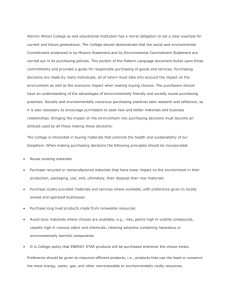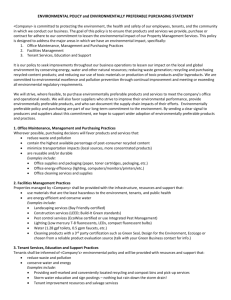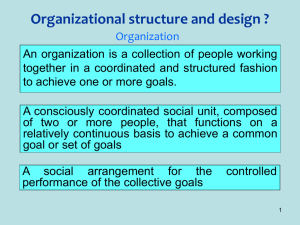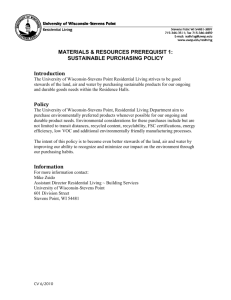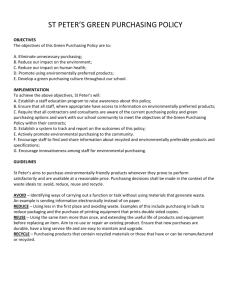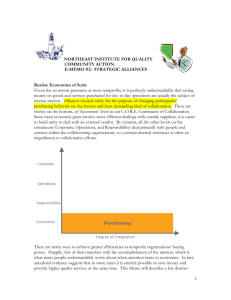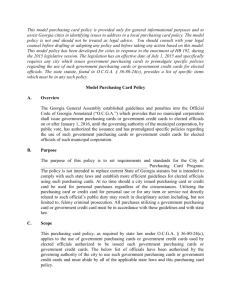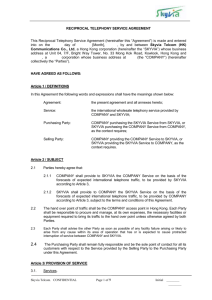a. purchasing - Xavier University
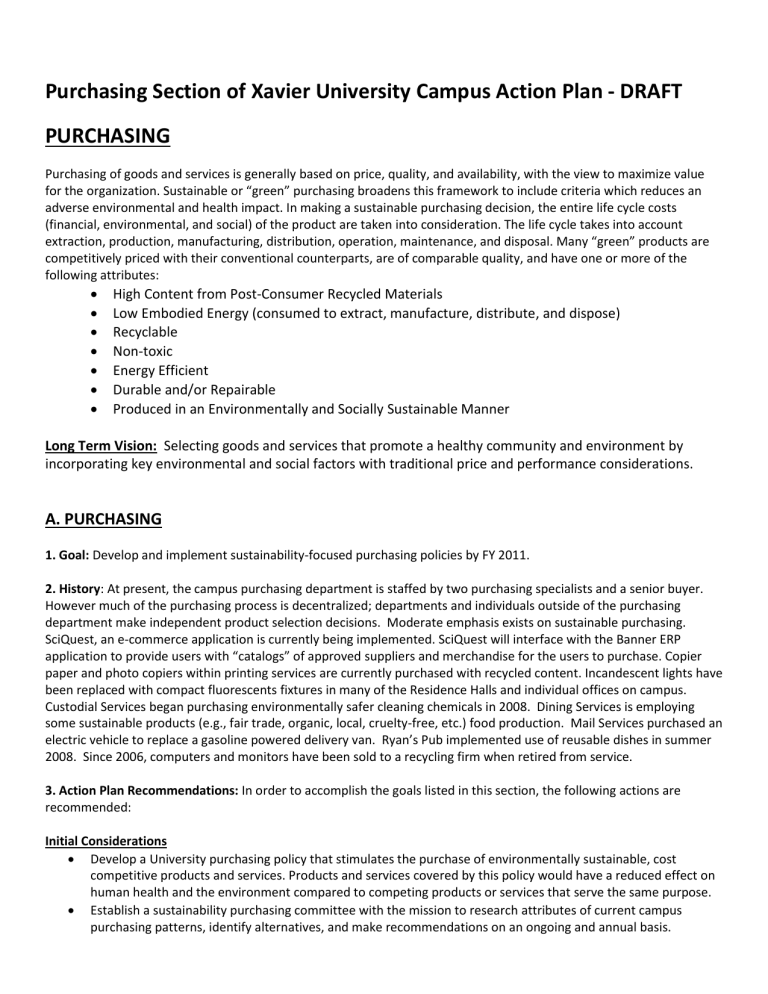
Purchasing Section of Xavier University Campus Action Plan - DRAFT
PURCHASING
Purchasing of goods and services is generally based on price, quality, and availability, with the view to maximize value for the organization. Sustainable or “green” purchasing broadens this framework to include criteria which reduces an adverse environmental and health impact. In making a sustainable purchasing decision, the entire life cycle costs
(financial, environmental, and social) of the product are taken into consideration. The life cycle takes into account extraction, production, manufacturing, distribution, operation, maintenance, and disposal. Many “green” products are competitively priced with their conventional counterparts, are of comparable quality, and have one or more of the following attributes:
High Content from Post-Consumer Recycled Materials
Low Embodied Energy (consumed to extract, manufacture, distribute, and dispose)
Recyclable
Non-toxic
Energy Efficient
Durable and/or Repairable
Produced in an Environmentally and Socially Sustainable Manner
Long Term Vision: Selecting goods and services that promote a healthy community and environment by incorporating key environmental and social factors with traditional price and performance considerations.
A. PURCHASING
1. Goal: Develop and implement sustainability-focused purchasing policies by FY 2011.
2. History: At present, the campus purchasing department is staffed by two purchasing specialists and a senior buyer.
However much of the purchasing process is decentralized; departments and individuals outside of the purchasing department make independent product selection decisions. Moderate emphasis exists on sustainable purchasing.
SciQuest, an e-commerce application is currently being implemented. SciQuest will interface with the Banner ERP application to provide users with “catalogs” of approved suppliers and merchandise for the users to purchase. Copier paper and photo copiers within printing services are currently purchased with recycled content. Incandescent lights have been replaced with compact fluorescents fixtures in many of the Residence Halls and individual offices on campus.
Custodial Services began purchasing environmentally safer cleaning chemicals in 2008. Dining Services is employing some sustainable products (e.g., fair trade, organic, local, cruelty-free, etc.) food production. Mail Services purchased an electric vehicle to replace a gasoline powered delivery van. Ryan’s Pub implemented use of reusable dishes in summer
2008. Since 2006, computers and monitors have been sold to a recycling firm when retired from service.
3. Action Plan Recommendations: In order to accomplish the goals listed in this section, the following actions are recommended:
Initial Considerations
Develop a University purchasing policy that stimulates the purchase of environmentally sustainable, cost competitive products and services. Products and services covered by this policy would have a reduced effect on human health and the environment compared to competing products or services that serve the same purpose.
Establish a sustainability purchasing committee with the mission to research attributes of current campus purchasing patterns, identify alternatives, and make recommendations on an ongoing and annual basis.
Incorporate the approved recommendations from the sustainability purchasing committee into the supplier catalogs within SciQuest.
Make sustainable products and services easily available in convenience or “captive audience” situations (e.g. less harmful detergents in dorm laundry rooms, more sustainable choices in dining halls and vending machines, etc.)
Within Three Years
Educate the campus community about sustainability purchasing programs and policies.
Future Considerations
Buying eco-labeled products or services with third-party certifications if pricing is considered fair and reasonable.
Using a Total Cost of Ownership approach via the election of more sustainable products/services based on a lifecycle product cost approach. This includes analysis of factors such as energy-efficiency, reduced waste or health/safety considerations, as well as cost.

